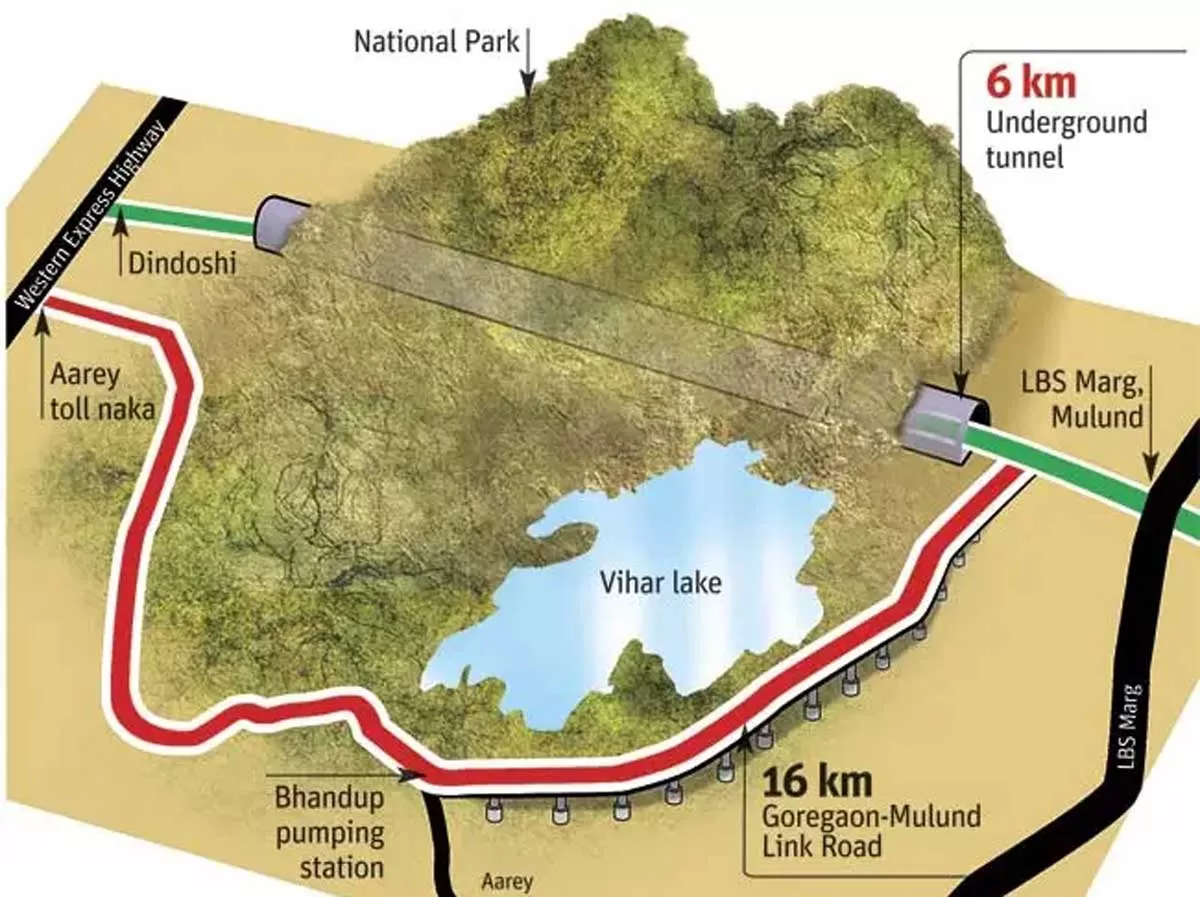The Goregaon-Mulund Link Road (GMLR) is set to revolutionise Mumbai’s real estate dynamics by significantly enhancing connectivity between the eastern and western suburbs. This ambitious 12.30 km-long project, featuring 6.65 km twin tunnels under the Sanjay Gandhi National Park (SGNP), will reduce travel time between Goregaon and Mulund from over an hour to just 25 minutes. With an investment of Rs 1,958 crore allocated in the BMC’s 2025-26 budget and an expected completion by 2028, this infrastructure initiative is poised to be a game-changer for Mumbai’s urban landscape. The GMLR is expected to spur real estate activity along its corridor, particularly in Mulund, Malad, Borivali, and Goregaon. Industry leaders weigh in on the transformative impact this project will have on Mumbai’s property market. With enhanced connectivity via the GMLR, Mulund is set to emerge as a high-end residential destination. This mega infrastructure project will make Mulund increasingly attractive to luxury homebuyers seeking seamless access to key city hubs.
Nishant Deshmukh, Founder and Managing Partner of Sugee Group, highlighted how the GMLR will elevate Mulund’s standing as a preferred residential hub. “With improved east-west connectivity, Mulund will attract homebuyers looking for better commute options to the western suburbs. The reduction in travel time will enhance its appeal for professionals working in Goregaon, Malad, and Andheri. Additionally, we anticipate heightened demand for premium residential projects as Mulund evolves into a well-connected urban center.”
Navin Makhija, Managing Director of The Wadhwa Group, echoed similar sentiments, stating, “The Goregaon-Mulund Link Road (GMLR) is a strategic infrastructure initiative that underscores the government's commitment to enhancing Mumbai’s connectivity and addressing congestion on the western corridor. By seamlessly linking the eastern and western suburbs, this project will not only alleviate traffic pressure on the Western Express Highway but also catalyze real estate growth in the eastern suburbs. The improved infrastructure and accessibility will make locations like Mulund and its surrounding areas even more attractive for homebuyers and investors. As demand surges, we foresee a firming up of property prices in the East, which are currently around 60-65% of the West, eventually bridging the gap and unlocking immense value for both residents and developers. The GMLR will play a pivotal role in reshaping Mumbai’s real estate landscape, making the city more integrated and well-connected.”
On the western front, the Malad to Borivali corridor is also set to gain prominence, with the GMLR serving as a crucial infrastructure catalyst. This arterial connectivity will not only improve east-west mobility but also reduce travel time, boosting demand for real estate in the region and positioning it as a prime residential and commercial hub.
Rohan Khatau, Director, CCI Projects, underscored the positive outlook for the Malad to Borivali corridor, stating, “The GMLR will alleviate congestion on existing routes and provide a seamless travel experience for residents commuting to the eastern suburbs. With improved access to business districts and employment hubs, the real estate market in these areas will witness heightened demand, particularly benefiting mid-segment and premium residential developments.”
Umesh Jandial, Chief Business Officer at Omkar Realtors & Developers, noted, “Goregaon and Malad have evolved into thriving residential and commercial zones, and the GMLR will further solidify their position in Mumbai’s real estate landscape. Improved connectivity will make these locations more attractive for homebuyers, resulting in higher property appreciation and increased interest from developers looking to launch new projects.”
Shraddha Kedia-Agarwal, Director of Transcon Developers, added, “The GMLR will be a game-changer for Malad and Goregaon, enhancing accessibility for professionals working in the eastern suburbs. This ease of commute will drive demand for premium residential spaces, mixed-use developments, and commercial hubs. We foresee a major boost in real estate transactions as these micro-markets become well-connected urban centers.”
As per Knight Frank India report, in January 2025, the Western suburbs and Central suburbs continued to dominate, accounting for 86 per cent of total market share in terms of property registrations in Mumbai. “This growth reflects a surge in supply and heightened end-user interest in these locations,” the report said.
Beyond residential developments, the GMLR is expected to attract significant commercial and retail investments, further strengthening Mumbai’s real estate sector. Its integration with major highways, including the Pune-Mumbai Expressway and the upcoming Navi Mumbai airport, will unlock new business opportunities and drive increased footfall in these areas. Moreover, reduced vehicular congestion will not only enhance the overall quality of life but also contribute to sustainable urban mobility, fostering a more connected and efficient Mumbai.
As the city eagerly anticipates the completion of this landmark infrastructure project, the GMLR is poised to redefine Mumbai’s real estate landscape, opening new avenues for growth and investment.





















